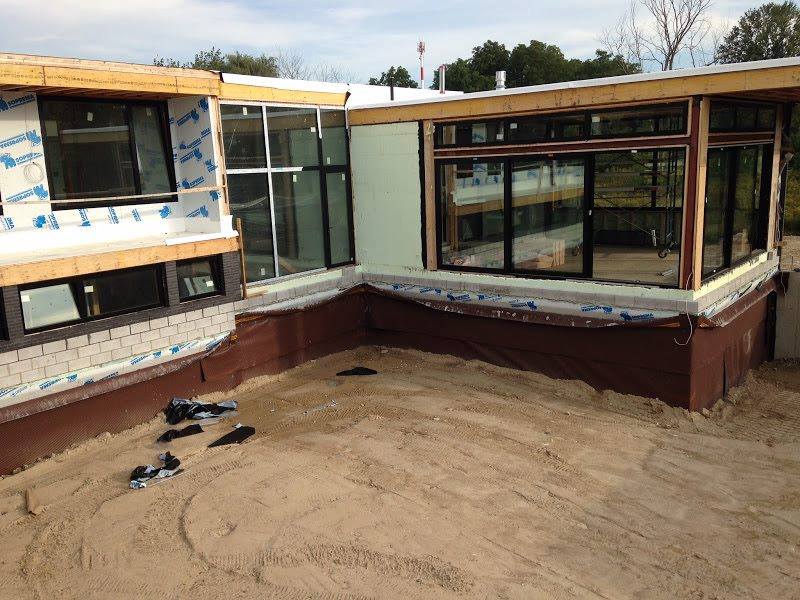How Can Insulation Prevent Heat Loss?
Adding new insulation to your home can help it be  more comfortable, maintain a stable temperature, and save you money on your monthly heating and cooling bills - but how is it that insulation prevents heat loss? All homes experience heat loss in some capacity, but understanding how heat transfer, convection, insulation, and R-value come together will help you find practical solutions to mitigate heat loss in your home. The first step in learning how insulation prevents heat loss is understanding why we need to control it, and how heat works.
more comfortable, maintain a stable temperature, and save you money on your monthly heating and cooling bills - but how is it that insulation prevents heat loss? All homes experience heat loss in some capacity, but understanding how heat transfer, convection, insulation, and R-value come together will help you find practical solutions to mitigate heat loss in your home. The first step in learning how insulation prevents heat loss is understanding why we need to control it, and how heat works.
Controlling heat flow is important because it allows:
- Greater home energy efficiency
- Improves your comfort by reducing cold/hot spots
- Increases the durability of your home by helping to prevent condensation and mold growth that negatively affect your building structure
Ignoring heat flow issues in your home will lead to expensive energy bills, comfort problems (such as uneven temperatures), condensation and humidity, or frozen pipes.
How Heat Works in Your Home
There are a few basic rules when we think about heat loss in our home. Heat flows from hot to cold; heat can never be stopped, only slowed down; heat flows either by convection, conduction, or radiation; insulation prevents heat loss by resisting heat flow, which is calculated by R-value (RSI).
The main reason for heat transfer is a difference in air temperature. The three ways that heat transfers between your home and the outdoors is convection, conduction, and radiation.
Convection describes that natural movement of air as a result of temperature differences. You’ve likely experienced this already - your home’s upper level may be warmer than the lower during winter or summer as heat rises.
Conduction is another familiar way that heat flows. Every morning it happens when you pour hot coffee into a fresh mug: the surface temperature of the mug goes from cool to hot as the heat transfers from one thing (coffee) to the other (your mug). In your home, this plays out in a different way, as every material has a different ability to resist conductive heat flow. Insulation prevents heat loss by trapping air, which is a poor heat conductor.
Lastly, heat transfer by radiation is the transfer of energy from one location to another by electromagnetic radiation. This can be as simple as the sun radiating in through your windows and warming your home to the heat a fire radiates as it burns in the grate.
Explaining R-value
When trying to reduce heat loss in your home, the best tool to help you assess different products is R-value. Also known as RSI (for those metric folks), R-value will tell you how well a material will resist heat flow; the higher the R-value, the better that insulation prevents heat loss and the more energy you will save.
So what does insulation even do?
- Reduces heat transfer from radiative heat sources
- Reduces heat transfer from conductive sources
- Divides the air space to reduce convection current
This combined reduction in the types of heat transfer allows you to keep your conditioned air where it belongs, regardless of the season or outdoor weather conditions.
Installing your insulation correctly is the key to having it work for you instead of against you - a poor installation can result in a loss of 25-30% of your R-value. Combining insulation with other R-value rated products increases what they call your Effective R-value, and can help you increase your heat retention benefits.
Bridging the Hot/Cold Barrier
The last of the fancy terms you may hear when researching how insulation prevents heat loss is thermal bridging. This simply refers to different materials in your home that have a higher rate of heat transfer than others. This can include:
- Steel studs
- Metal window and door frames
- Slab walls and floors
- Shear walls
These areas can become problematic sources of heat loss that reduce your overall efficiency and cause comfort and condensation problems. The good news is that heat loss by thermal bridging can be reduced by:
- Creating a continuous thermal barrier around your home
- Adding new insulation in ceilings and walls, especially around transition points, like the floor or attic
- Insulating around windows and doors where studs, metal, or gaps might be causing heat loss
Reducing Heat Loss Through Insulation
Heat loss is one of our home’s greatest enemies, but as with all foes, understanding its weak spots and knowing where to strike can make a big difference in the long run. A greater understanding of how insulation prevents heat loss in your home and what types of heat transfer could be causing problems will allow you to understand how your home is working as a system, and allow you to look for and target areas that need extra support.



